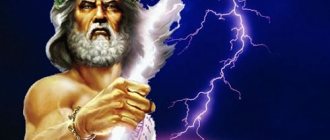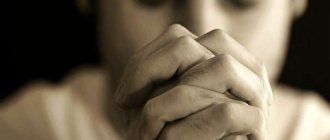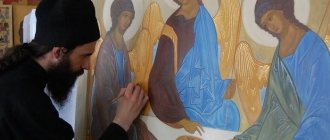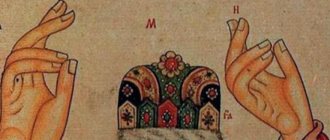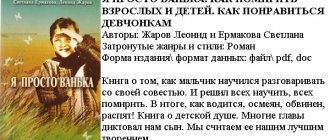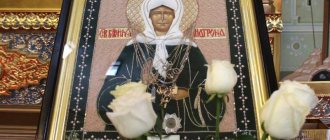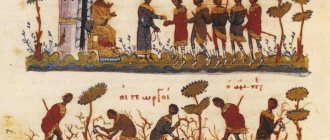Not all Orthodox people know what Bethesda is. What is it? Bethesda is also called the sheep font. Bethesda are two reservoirs that were dug in the bed of the Beit Zeina River in Jerusalem. The Gospel of the Apostle John mentions Bethesda as the place where Jesus Christ himself healed the paralytic.
It is believed that this font is located at the sheep gate, which is mentioned in the Bible in the book of Nehemiah.
“...There is a pool in Jerusalem at the Sheep Gate, called Bethesda in Hebrew, which had five covered passages. In them lay a great multitude of sick, blind, lame, withered, waiting for the movement of the water, for the Angel of the Lord from time to time went into the pool and disturbed the water, and whoever first entered it after the disturbance of the water recovered, no matter what disease he was possessed by...” .
John 5:2
In this photo we can see Bethesda in Jerusalem, where, according to the Gospel of John, people were healed from various diseases. This is exactly what she looks like now. A huge number of people flock to this place at any time of the year, including not only believers
The Gospel of John describes Bethesda as a pond that has healing value
Bethesda is mentioned in the Gospel of John. It describes that it is a pond that has healing value. This is precisely what its name indicates, which means “house of mercy” in Hebrew.
Near the pond there were covered passages and galleries, which were erected for the convenience of the sick. They said that people gathered here in anticipation of disturbance of the water. When such a moment occurred, the person who gets there first will immediately receive healing from his illness, no matter how terrible it is.
Of course, it is unknown how long people had to wait. But we can assume that it will take a very long time, since the grace of God is not always given, and only through the true prayers of people.
Currently, the site of the long-known bathhouse called Bethesda is grass and abandoned ruins. Previously, in this very place, people waited in line and received the long-awaited healing, which could have waited a year, or two, or a whole decade. But people waited and endured
Bethesda as a symbol of healing
Of course, the wonderful story with Jesus and the paralytic was reflected in the iconography. There are many icons depicting the “healing of the paralytic.” World art has also not ignored this parable about mercy. The paintings of the Dutchman Peter Aertsen, a representative of the Northern Renaissance, the Spaniard Bartolome Esteban Murillo, the Dane Karl Heinrich Bloch, famous for his gospel stories, the famous English painter William Hogarth, the Polish-Russian artist Jan Zionglinsky are dedicated to her.
In modern times
In Central Park in Manhattan, New York, on one of the terraces there is a beautiful fountain of Bethesda with a sculpture of an angel holding a lily flower in his hand. “Angel of the Waters” is the work of sculptor Emma Stebbins. The fountain was installed in 1842 to commemorate the opening of the city aqueduct. The lily in the hand of an angel symbolizes the purity of water. Emma is the first female artist to receive an official commission from the City of New York.
The Pool of Bethesda is represented in the north cloister wall of the Episcopal Church. Pink limestone angel carved by Janet Scudder.
In Palm Beach County (also in the USA), on the shores of the Atlantic Ocean, stands an Episcopal Church in the Spanish Gothic style, called Bethesda-from-the-sea. The church is distinguished by its original beauty; in the northern wall there is the “pool of Bethesda” - a small fountain with the figure of an angel carved from pink limestone. This temple was built in 1925.
The Spanish Gothic church is modeled after the cathedral in Leon, Spain.
The name “Christian Brotherhood of Bethesda - House of Mercy” is one of the associations of the Evangelical Church in Russia.
Source: Tours to Israel
One day, at the site of the font at the Sheep Gate, Jesus healed the paralytic
In the Gospel, this pond is closely associated with the story of Jesus Christ’s healing of one paralytic, who had suffered for more than thirty-eight years from his severe illness that burdened him. When he completely despaired of receiving healing, he unexpectedly received it from a Galilean teacher unknown to him.
Let's consider what is written about this paralytic in the Holy Gospel:
“...There is a pool in Jerusalem at the Sheep Gate, called Bethesda in Hebrew, which had five covered passages. In them lay a great multitude of the sick, the blind, the lame, the withered, waiting for the movement of the water, for the Angel of the Lord from time to time went into the pool and disturbed the water, and whoever first entered into it after the disturbance of the water recovered, no matter what disease he was possessed by.”
John 5:5
Jesus, seeing him lying down and learning that he had been lying there for a long time, said to him:
“..do you want to be healthy? The sick man answered Him: Yes, Lord; but I do not have a person who would lower me into the pool when the water is troubled; when I arrive, another has already descended before me. Jesus says to him: get up, take up your mat and walk. And he immediately became well, and took up his bed and went. It happened on the Sabbath day...”
John 5:8
In this image we see how many people, in the hope of salvation, are waiting for that very “disturbance of the water” in order to quickly receive healing from their illness. As we see, Our Lord Jesus Christ turns to the paralytic with the question of whether he wants to live. He extends a helping hand to him, and the paralytic receives his healing
Bethesda in Jerusalem
Source of information: Nun Mariam (Yurchuk)
Guide to the Holy City of Jerusalem Volume I Guide to the Holy Land Volume II Russian Spiritual Mission 2021. (These books can be ordered at our pilgrimage center)
The Pool of Bethesda (evp.Bet-Esdatayin), is mentioned in the Gospel as the place of the miracle of Jesus Christ’s healing of the paralytic, who had previously languished in a serious illness for 38 years. The ruins of this ancient bath remain in the Muslim quarter of the Old City, about fifty meters from St. Stephen's Gate, or the Lion's Gate. In evangelical times there was a suburb of Jerusalem here, called by the Jewish historian Josephus Bezetha (Heb. Bezetha). This name has been preserved to this day in the pilgrimage tradition, as well as among the Christian residents of the Old City. Inside a spacious courtyard planted with trees, shrubs and flowers, directly next to the ruins of the Gospel Bethesda, there is the Catholic Church of St. righteous Anna. The silence and tranquility inherent in this holy place contrasts with the noise of the streets and alleys of the busy Muslim quarter. The entire archaeological park with the pool of Bethesda and the Church of St. Anne belongs to the Catholic missionary order of the White Fathers (the name comes from the color of their clothing), founded in 1865 by Cardinal Charles Levigerie, Archbishop of Carthage. There is also a small biblical museum on the territory of the monastery. The ancient ruins of Bethesda, with its dilapidated Crusader-era church, were presented to the French Emperor Napoleon III in 1856 by the Ottoman government in gratitude for its assistance against Russia in the Crimean War. Usually this pool, in which “there lay a great multitude of the sick, the blind, the lame, the withered, waiting for the moving of the water” (John 5:3), was popularly called in Aramaic Bet-Hesda, which means “House of Mercy.” "or "House of Grace". This name reflected the healing properties of this place and indicated the existence of a kind of almshouse here. In Greek transcription this place is known to us as "Bethesda". The correctness of this name was confirmed by finds at Qumran, where copper tablets mention the pool of Beit Eshdatayin (the dual form of Bethesda) and the smaller of its two pools. The use of the dual form of the name was apparently caused by the architectural feature of this structure, consisting of two pools. In Gospel times, this font was located at the Sheep Gate, located near the northern wall of Jerusalem. Sacrificial animals intended for the Old Testament Temple of Jerusalem were driven through these gates. The sheep gate is mentioned in the Book of Nehemiah (Neh. 3:1; Neh. 12:39). Near this gate there was a market for the sale of sacrificial animals for the Temple. The biblical Sheep Gate is identified with the modern gate of St. Stephen (Gethsemane, Lions). In close proximity to them there is a gate called the “Gate of the Tribes” (Arabic: Bab el Asbat) and leading to the top of the Temple Mount. Water from two huge reservoirs of Bethesda was used for the needs of the Old Testament Temple and was supplied through an open channel. The waters of the font were no longer used for temple purposes after the construction of a larger reservoir, Birkat Israel, located closer to the Temple in the 1st century. after R.H. In 44 after R.H. Herod Agrippa I surrounded this northern suburb of Jerusalem with a new city wall, including it within the city limits. This new wall almost cut off the water supply to the reservoir, but it still filled with water during the winter. The presence of two basins suggests that a reservoir has existed in this lowland since ancient times. The first reservoir based on a dam was built during the era of the first Temple. Rainwater flowing into the Bet Zeta Valley formed a natural lake. This first reservoir is referred to in Scripture as the “upper pool” (Is. 7:3; Is. 36:2 and 2 Kings 18:17). The second pool was built in order to increase the capacity of the structure supplying water for the needs of the Temple. The construction of the second pool dates back to the construction activities of the high priest Simon “the Righteous” (220-195 BC). It is assumed that this reservoir is also mentioned in the Book of Wisdom of Jesus son of Sirach (Wisdom Sir.50:3). The architectural design of this ancient reservoir in the form of five porticoes, types of columns, etc. usually attributed to the era of Herod the Great, since excavations revealed many capitals, bases and column shafts typical of this time. In 1932, Jewish graffiti was discovered on the south wall of the font, probably left before the Bar Kokhba revolt in 131-135. after R.H. Both fonts were partially carved into the rock and partially lined with cut stone. The exact shape of the fonts is still unknown, since a significant part of them is located under the densely populated part of the city. The two open basins were connected by a central dam, dividing them into northern and southern ones. Inside the dam, 6 m wide, there were channels for water drainage. The depth and size of the pools are amazing even today. The pools measured approximately 40 x 50 and 60 x 70 m, and their average depth was about 13.5 m. The bathhouse was surrounded on all sides by magnificent covered galleries in the form of porticoes. It is assumed that one of the porticoes was built on the barrier separating the fonts, the rest, respectively, on their sides. Archaeological evidence shows that between 150 B.C. and 70 after R.H. To the east of the reservoir there were wide steps that served to descend down. This characteristic detail suggests that here was a place used for the Old Testament Jewish ritual ablutions (mikveh). The font discovered here, as well as other nearby baths and grottoes, served this purpose. Old Testament pilgrims entering the city from the northeast side through the Sheep Gate could perform the ritual ablutions prescribed by law here before visiting the Temple. During the Jewish holidays, a huge number of people visited Jerusalem, and archaeologists have so far not found any other fonts in the area adjacent to the Temple Mount, except for the Siloam font, which would have served as a place for mass ablutions. It is with this place that most researchers associate the miracle of Jesus Christ’s healing of the paralytic (John 56:3). During the Roman period in the 2nd century. after R.H. the entire complex was rebuilt into a temple dedicated to Asclepius, so these baths were equipped according to the new cult. The first excavations of the “Sheep Pool”, which revealed several archaeological levels, were carried out in 1888 by the German archaeologist Konrad Schick. Later, in 1957-1962. excavations were continued by the Dominicans under the leadership of Roland de Vaux. The coincidence of the data of the gospel narrative and early Christian tradition, on the one hand, and the results of excavations, on the other, give grounds to assert that the location of the gospel Bethesda is undoubtedly correct. Gospel event Jesus Christ came to Jerusalem for a Jewish holiday. At the pool at the Sheep Gate, which had five covered galleries, “there lay a great multitude of the sick, the blind, the lame, the withered, waiting for the movement of the water” (John 5:3). The people gathered around the font represented an image of a world that did not know Christ, but thirsted for a miracle and mercy. “The angel of the Lord from time to time went into the pool and troubled the water, and whoever entered first after the water was troubled was healed, no matter what disease he was afflicted with” (John 5:4). One day, passing by the sick, the Lord saw a man lying down, suffering from paralysis for thirty-eight years, unable to move independently, and asked him: “Do you want to be healthy?” “So, Lord,” the paralytic answered Him meekly, “but I have no man to put me into the pool when the waters are troubled...” (John 5:7). This circumstance made him the most unhappy of all the sufferers present at the font. The Savior said to him: “Get up, take up your bed and walk.” The sick man, having experienced the power of the Divine Word, instantly recovered and, taking his bed, went. Christ hid among the people. By healing the helpless sick man, Christ demonstrated the superiority of His saving grace over the means of salvation in the Old Testament. The law recognizes sin (Rom. 3:20), but the law itself does not give the strength to fight sin, relying in this fight only on the natural strength of man. This strength is given only by the grace of God. The greatest miracle performed by the Savior did not cause universal joy and gratitude among the Jewish lawyers; on the contrary, it became a reason for denouncing the healed patient for violating the Sabbath rest: “Today is Saturday, you should not carry the bed.” According to the Jewish Mishnah, a bed was only allowed to be moved on the Sabbath if there was a person on it. Avoiding responsibility for violating tradition, the healed man referred to the authority of Christ: “He who healed me said to me, Take up your bed and walk” (John 5:11). After some time, the healed man came to the Jerusalem Temple, perhaps to offer a sacrifice of thanksgiving to God for his healing. There the Savior met him and, showing concern for his soul, uttered the famous words: “Now you have recovered; Sin no more, lest anything worse happen to you” (John 5:14). After this, the healed man went and openly announced to the Jews that Jesus had healed him. Then “the Jews began to persecute Jesus and sought to kill Him because He had done such things on the Sabbath” (John 5:16). To the accusations of the Jews blinded by malice, Christ answered: “My Father works until now, and I work.” After which, with even greater cruelty, they sought to kill Him “because He not only violated the Sabbath, but also called God His Father, making Himself equal with God” (John 5:18). The ideal of perfect love that Christ showed for the sick, disadvantaged people who met on His path was incompatible with the subtleties of Jewish casuistry. In response, Christ finally reveals to the Jews not only the meaning of the doctrine of the Sabbath, but also about Himself as the Consubstantial Son of God, about His Divine dignity, unity of will with God the Father, about the general resurrection and judgment: “Truly, truly, I say to you: the Son of nothing cannot create on His own if He does not see the Father doing: for whatever He does, the Son also does... Just as the Father raises the dead and gives life, so the Son gives life to whomever he wants... He who does not honor the Son does not honor the Father, who sent Him... the time is coming, and has already come, when the dead will hear the voice of the Son of God, and having heard, they will live... Do not think that I will accuse you before the Father: you have an accuser, Moses, in whom you trust” (John 5:19 -47). In this Gospel story, the Holy Fathers of the Church saw deep symbolism: the name “sheep gate” indicated that Jesus Christ is the “door to the sheep” (John 10: 7); five porches enclosing the font - a symbol of the five books of Moses; 38 years of suffering for the sick man - an indication of the 38 years of wandering of the Jewish people in the desert (Deut. 2:14). The paralytic himself was the image of a sinner, paralyzed in doing good and fulfilling the Divine commandments. Some symbolism is also present in the following: during the conquest of Jerusalem, King David, offended by the insolence of the Jebusites, who claimed that even the lame and the blind could defend this city, ordered, out of his human weakness, to kill the blind and lame with a spear (2 Sam. 5:8). Jesus Christ - the son of David - during His life, despite the fact that he visited Jerusalem several times for a long time, he performed only two miracles in it: he healed a man born blind (John 9: 1-38) and a paralytic at the Sheep Pool, i.e. , in fact, the lame (John 5:1-16), so that this city would stand forever. Also, after the Savior expelled the traders in the Temple, it was “the blind and lame who came to Him, and He healed them” (Matthew 21:14). The healing of the paralytic is a visible sign of the coming of the Messianic days. This miracle pointed with extraordinary precision to Isaiah's prophecy that in the days of the Messiah, “the lame shall leap like a deer” (Is. 35:4-6). The miraculous healing of a hopelessly ill, paralyzed man who had been lying on his sick bed for 38 years served as a sign that the Messiah had already come. The Sabbath day (evp.shabbath - “to rest, to rest”) lasted from sunset on Friday to sunset on Saturday and was heralded by the sound of trumpets. Having completed the creation of the world, God sanctified and blessed the seventh day (Gen. 2:2) and commanded Israel to keep it holy (Ex. 20:11; Ex. 31:17). By law, no work was allowed on Saturday. This day was given to people to rest, glorify God in joy and freedom from worries. Over time, Jewish teachers of the law became soulless formalists and strictly ensured that the letter of the law was observed, without paying attention to its spirit, essence and meaning. They distorted the Sabbath commandment by surrounding it with thousands of norms and detailed rules. The Sabbath was never a day of absolute rest for the Jews. On this day, sacrifice in the Temple and all kinds of work associated with it were allowed (Num. 28:9), circumcision was also allowed, even pulling an ox or sheep out of a pit on Saturday was allowed (Matt. 12:11). People at all times, by the will of God, are born and die on Saturday. Only the liberation of man from the power of sin, i.e. healing from illness and giving him strength to fulfill the Law of God, the Jewish formalists, not having true love for people, considered sinful. God, through the mouth of the prophet Hosea, admonished the people of Israel: “I want mercy, not sacrifice” (Hos. 6:6). There is much evidence in the Gospel that Jesus Christ “was subject to the law to redeem those under the law” (Gal. 4:4) and taught others to keep the law (Matt. 19:16-30). God, through the mouth of the prophet Jeremiah, commanded: “You shall not carry burdens on the Sabbath day, and do not bring them in through the gates of Jerusalem” (Jer. 17:21-24). Here, however, we are talking about trade and work on this day, which naturally violates the very essence of the Sabbath commandment. The Sabbath rest was grossly disturbed in Nehemiah's days by field work and trade, so he gave orders to lock the city gates on the evening before the Sabbath, and “I stationed my servants at the gates, so that no burden should pass on the Sabbath day” (Neh. 13:19) . God finished the creation of the world (Gen. 2:2-3), but His “heavenly Sabbath” did not become rest in the sense of the cessation of all activity. He rests from the works of creation, and His constant activity - good providence for the world and for man, punishment and mercy - continues. The Incarnate Son of God especially honored the Sabbath when, on the Sabbath day - the day of rest - he rested in the Tomb on the eve of the eighth day - the day on which He defeated death by His Resurrection. On the other hand, the Lord Jesus Christ told the paralytic to take the burden, and he listened, as the patriarch Abraham listened to God, showing his devotion to the Creator by his readiness to sacrifice his son Isaac, as all the prophets and righteous people listened to God. In memory of this miracle, the fourth Sunday after Easter is called the Week of the Paralytic. According to the explanation of the Synaxarion, this miracle is celebrated then because Christ performed it during the Old Testament Pentecost. “Rise up my soul, O Lord, in all sorts of sins and in placeless acts of cruelty, weakened by Thy Divine intercession, as He raised up the weakened one of old, so that I call You to be saved, the Generous One, glory to Christ, Thy power.” (Kontakion, tone 3.) Historical information The memory of the healings that took place at this place did not disappear in the Roman era. After 135, when the Roman city of Aelia Capitolina arose on the site of Jerusalem, a pagan temple of Asclepius (Egyptian Serapis, Roman Aesculapius) and arched galleries in front of the baths were built in the southeast of the pools of Bethesda. Asclepius, according to ancient Greek mythology, was the god of medicine and healing. Archaeologists have found carving details here in the form of snakes of the 4 symbols of Asclepius. The first of the Christian writers to report about the pool of Bethesda was Origen (c. 231), who connects the five porches mentioned in the Gospel with the double form of the pool itself. Church historian Eusebius of Caesarea (c. 263-340) in Onomasticon (explanation of biblical geography) reports that in his time there were no porticoes at the font, but both parts of the bath were still filled with purple-red rainwater. The church writer Blessed also mentions her. Jerome of Stridon (c. 342-420), calling Bethesda Probatica (Latin “probatus” - merciful). An anonymous traveler from Bordeaux, who visited Bethesda in 333, reports a double pool with five porticoes and notes that the water in these reservoirs “becomes red if disturbed.” St. Cyril of Jerusalem even preached a sermon for believers in 347 in this place. In his writings, he mentions the architectural features of Bethesda, which in the 19th century. have been confirmed by archaeological excavations. “The Sheep Market in Jerusalem had a reservoir with five galleries, four of which framed the pool, the fifth crossed it in the middle,” the saint writes, noting that in his time “many sick people lay there,” apparently waiting for healings.
Construction of the baths in Jerusalem began in the 8th century BC
The question of the location of this pond has not found its final resolution. The construction of the font dates back to the 8th century BC.
In Jerusalem it was located near the northern walls. According to the testimony of the Evangelist John himself, the pond was located at the Sheep Gate. They are compared to St. Stephen's Gate, which can be seen today.
In the Muslim part of New Jerusalem there is a dried-up reservoir, which is there to this day. It was kept in good repair, since its banks were lined with durable materials.
Currently, this is what St. Stephen's Gate looks like. Previously, this was the gate, which was nicknamed the Sheep Gate
What does this bath represent? The bathhouse is a regular quadrangular oblong shape, up to fifty fathoms in length and seventeen fathoms in width.
Local residents also called it "Birket Israel", that is, the Israeli pond. In the photo below you can see a more modern model of Bethesda.
This is what a more modern model of Bethesda looks like. But even so one can imagine its scale and unusualness
You can also see near the western wall the ruins of two arches, which are mentioned in the Holy Gospel of John as covered passages.
There is a version that Bethesda is located next to the Basilica of St. Anne
There is also a version that Bethesda is located next to the basilica in honor of St. Anne. Even during the Crusades, this pond was called the “Sheep Bath.” Traces of five arches were found near this pond.
In the photo you can see a large pool, which consisted of two tanks separated by one wall. It was this pool that was found on the territory of the monastery near the church of St. Anna.
A small pool, separated by a wall, consisting of two reservoirs was found near the church in honor of St. Anne in Jerusalem
Many have seen Bethesda in the “Virgin” pond. Where is he located? This pond is located in the Kidron Valley. For some unknown reason, water disturbances occurred there several times a week.
But nowadays Bethesda is considered to be the ruins near the basilica in honor of St. Anne.
In this photo you can see the Basilica of St. Anne in Jerusalem. If you pay attention, below in the photo there is the same pond - Bethesda, in which the water disturbance described in the Holy Gospel of John took place
Archaeologists claim that this pool had fairly large and wide steps with landings. That is, we can assume that there was a Mikvah there. A mikvah is a special water tank for ablution. This pool had a depth of about 13 meters.
Pagans have long attributed healing powers to water
Also, the Romans themselves believed that the font was healing, and therefore decided to build several large pools in the caves to the east of the font. They dedicated them to the god of medicine and healing. The pagans gave healing powers to water.
Nowadays, water is not a source of healing for everyone. For some, it is just an ordinary superstition. But the fact that we see in the Holy Scriptures tells us that people did not see the Angel, but saw the supernatural movement of the water itself in the reservoir, after which they received healing. They essentially had no understanding of true healing from God.
According to the Old Testament, people only knew that God was punishing them for their sins.
Then people did not yet know about Jesus, who came into the world to show the whole world His love and mercy of God the Father. That is why people were waiting for a solution to their problems, this was their chance to receive healing and move on with their lives.
In ancient times, people greatly revered water, especially rivers and springs. Water was precious to them, and during, for example, a flood, it had a strong effect on them.
Currently, there are people who believe in God, but they are not looking for His power, love and mercy, but for touching something supernatural.
An example is that many people touch icons, relics of holy people, light candles for health, bathe in healing waters, and so on. Each of us is surrounded by people who are similar to those who once gathered in Bethesda.
Pool of Bethesda
Why did Bethesda heal the sick?
At times, the water in the pool began to boil or some other kind of water movement occurred (“The angel of the Lord troubled the water”).
There is a legend that the water in the Sheep Font had healing properties because it contained a tree, from which the Pharisees or Romans later made a pillar for the crucifixion of Christ. This is the tree that grew from Lot: he, in atonement for his involuntary sin with his daughters after the destruction of Sodom and Gomorrah, spent 40 years extracting and carrying water from the Jordan River on a donkey to water three staves (cedar, cypress and pine). Forefather Abraham told him to do this until the staffs came to life. In the end, they “came to life” and merged into one beautiful tree - this was a sign of forgiveness of sin. King Solomon ordered to cut down a wonderful tree for the roof beam of the Temple under construction, but nothing came of it: the cut trunk could not even be measured - it became larger and smaller. They decided that he behaves this way because of Lot’s sin - why use him for the Temple!
The Queen of Sheba kneels before the Life-Giving Tree.
Fresco by Piero della Francesca According to another version, the tree trunk was used as a bench - and one day the Queen of Sheba, who came to meet and talk with Solomon, sat down on it. But heat emanated from the tree, and the wise queen, standing up, bowed to the wooden beam and predicted that it was from it that the Messiah would find his death, and therefore disasters and destruction awaited the kingdom of Judah. Solomon was frightened by this prophecy, and he ordered the “bad” tree to be buried in the ground.
Then in this place they dug a reservoir in order to wash the animals intended for sacrifice in it - the Sheep Pool, and soon it became famous as healing people.
Healing of the paralytic at the Sheep's font
The one who was the first to get into the bath during the “disturbance of the water” came out healed (regardless of the severity of the illness).
The word “first” is significant here - you can imagine how these unfortunates behaved, how they clung to the shore of the reservoir, eagerly looking at the water, how they pushed each other with their elbows, because everyone tried to swim before the others!
A certain man, paralyzed (which simply means “paralyzed”), lay near Bethesda in the vain hope of being cured. He had been ill for 38 years (one can imagine the condition this poor fellow was in, lying motionless under the hot sun of Judea). Jesus, noticing him and learning that he had been lying there for a long time, approached him and asked if he wanted to become healthy. He honestly answered that, of course, he wants to - but he has no one, and no one wants to help him get into the water, someone always gets there first before he crawls. All these sick citizens look unsightly in their selfishness: it never even occurred to anyone to help a helpless person, everyone thought only about healing their own ailments!
And even those who recovered did not think to help another! Apparently, water only healed the body - but not the soul. This, it seems, was emphasized by Jesus, who did not even think of leading the paralytic to the water. He simply told him to get up, pick up his mat, go and sin no more. And he did just that! Simple attention to the person and mercy healed the unfortunate man; a medicinal bath was not needed at all.
Many Roman historians wrote about Bethesda
It is also worth paying attention to the fact that many historians have written about Bethesda.
For example, Eusebius of Caesarea, a Roman historian and bishop of Caesarea in Palestine, writes about Bethesda as follows:
“...Bethesda is the font in Jerusalem, which is also the Sheep, which in ancient times had five porches; and now it is shown in two pools located there, one of which is filled with annual rains, the other has water miraculously colored red, representing, as they say, the trace of the victims who washed themselves in it, which is why it is called: Sheep, because of the victims ... " .
Eusebius of Caesarea
bishop, historian
By leaving a comment, you accept the user agreement
Feasts of the Lord
(John 5:1)
After this there was a feast of the Jews, and Jesus came to Jerusalem.
We are talking about Pentecost, but pay attention to the phrase “Feast of the Jews.”
God first called the seven feasts of Israel the feasts of the Lord.
(Lev 23:2)
Proclaim to the children of Israel and tell them about the feasts of the Lord, on which sacred assemblies are to be called.
It was a celebration of the Lord with His people. Once upon a time, these were the holidays of the Lord, but now people made these holidays for themselves, and they became Jewish holidays.
